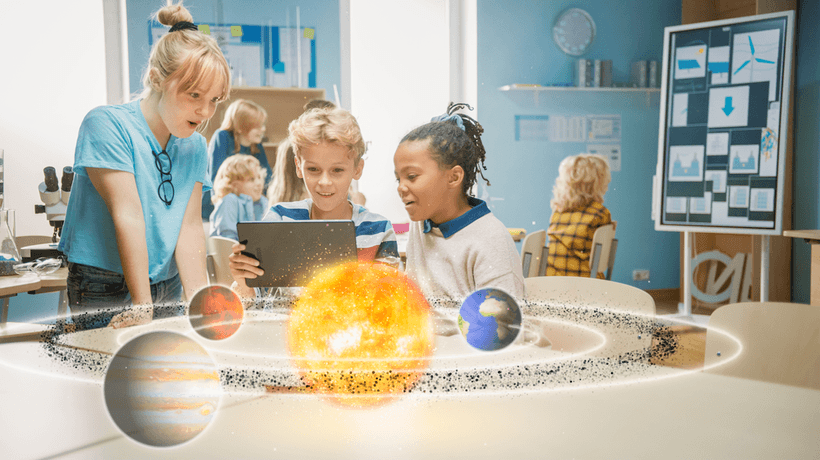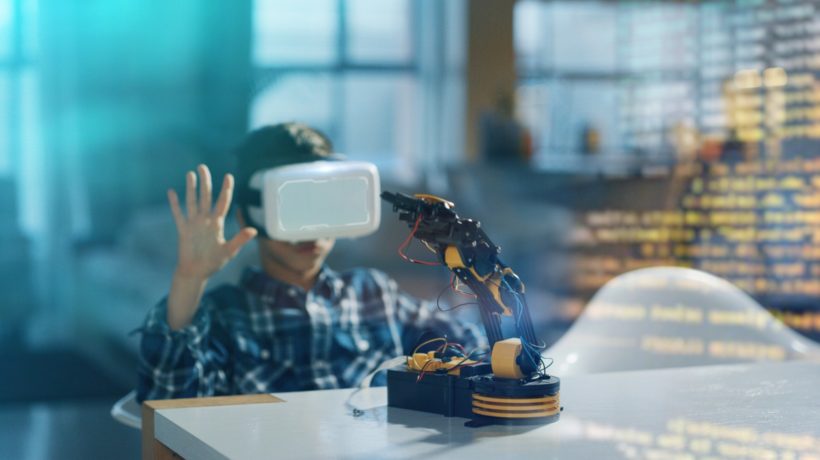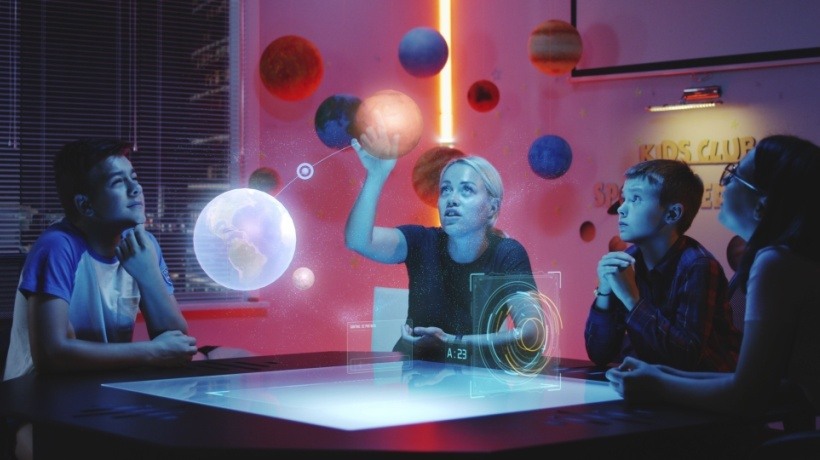The Role Of AR Technologies In Education
Technology has fast-forwarded every facet of the education system. In this article, you'll get an insight into how AR technologies are breaking free of the restriction of screens, seamlessly blending into real-world strategies. AR technology is reshaping the way we engage with our surroundings and the role of AR technology in education is yet to be unveiled to its maximum potential.
Augmented Reality (AR) has been applied to all the industries that are growing or seeking future growth. But particularly, when we talk about AR in learning, we always commend it to be a dynamic educational tool, now and in the future. Offering the flexibility to enjoy learning with interactive textbooks, 3D models, and immersive learning experiences, it provides vast experiences, from virtual tours to anatomy lessons. AR enhances student engagement and understanding of the learning material.
With Augmented Reality in education, learning will not only be informative but also captivate the learners, engage them, and motivate them to learn and sustain the concept more quickly. The adventure of learning is real!
The Benefits Of AR In Education
1. Increased Engagement
AR is the new advancement in educational settings that attracts learners due to its high engagement energy. It allows the students to learn everything through visuals. This increases information retention and decreases the cognitive load.
Due to the nature of its functioning, it supports the modern way of learning for the youth and keeps their interest levels high. This results in the active participation of students. With all the 3D focus and visual appeals, AR turns all the abstract subjects into an immersive learning experience.
2. Improved Understanding Through Enhanced Awareness
Its capacity to enhance the comprehension of complex subjects such as mathematics—often seen as the yearly challenge for many students—makes it an ideal educational method. AR can easily turn mathematical concepts into simplified and interactive visuals where theorems and formulas come alive beyond the "Let's assume..."—interesting, isn't it?
AR also plays an invaluable role in science education by providing engaging simulations for virtual experiments, biological systems, complex theories of the universe, and more. The result is a better understanding and a long-lasting impression on the brains of the learners. Augmented Reality (AR) acts as a link between the complex concepts in education and the ease of comprehending them by the human brain.
3. Immersive Quest For Complicated Concepts
The complexities of the concepts always put students' morale down but, with AR, they can easily understand. Also, reading texts and referring to small, printed images of cells, molecules, or atoms and particulates is always a struggle. AR brings the visual intricacies to help you understand better.
4. Blending Theory And Practice For Better Understanding
Facing the challenge of understanding theories without having a visual or practical implication is difficult. AR with its real-world application technology solves the problem and gives learners a clear view of what they are studying. Like, we study Newton's Law but watching the theory in a real-life situation gives a clearer idea about the concept. Augmented Reality (AR) addresses this gap and positively fills in the requirement.
5. Personalized Education Journeys
Individualization of education has become a necessary and inevitable part of effective learning. Every learner has a different approach, style, and level of understanding toward learning, and tailoring to their needs is the most important way to set up a successful education system.
Keeping this in mind, AR has been designed to cater to every individual’s need and pattern of learning. Creating interactive simulations to suit the learner's style and navigating them toward clear understanding allows them to experience the easy adaptation of the learning material.
Real-World Applications Of AR Technologies
1. Exploring World Virtually
Keeping the adventure alive while studying the world, its history, geographical form, civilization, bioscience, and everything—while sitting in one place—AR allows learners to not only read but to experience the gist of it. Now studying is a lifetime experience that you'll always remember.
2. Discovering Human Anatomy With AR
The human body is a complex organism so it requires a thorough understanding of its composition, functions, and lifecycle. AR gives you a free hand to learn it in a fully three-dimensional way to understand everything from its roots. The study of biology becomes easier and sounds more conceptual with all the visual simulations.
3. Potential For Creating Comprehensive Learning Environments With AR
- Appreciating diversity in education
- Multimodal learning experiences
- Universal Design for Learning (UDL)
- Collaborative language learning
4. Aiding Diverse Learning Needs
- Interactive remedial tools
- Assistance with technology integration
- Increased engagement and interest through gamified learning
Takeaway
Learning innovations have touched new heights with AR in our hands, promising adventurous and super-efficient learning to the education world. The transformative role of AR ensures a brighter future in education for all backgrounds, with diverse interests in learning. Classroom education has changed drastically after the discovery of Augmented Reality (AR) in education. AR is an interactive source of education that will keep all the learners engaged and focused till the end. AR is the new future, the better one!










